#dactyloid
Explore tagged Tumblr posts
Text
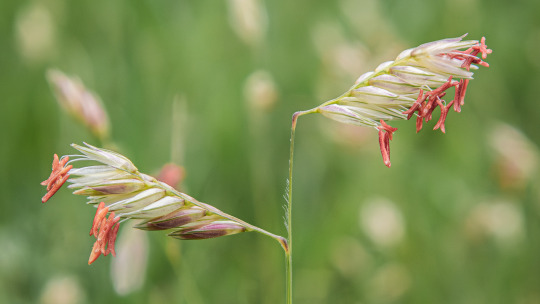
Scientific Name: Bouteloua dactyloides Common Name(s): Buffalograss, buffalo grass Family: Poaceae (grass) Life Cycle: Perennial Leaf Retention: Semi-evergreen Habit: Graminoid USDA L48 Native Status: Native Location: Plano, Texas Season(s): Spring
Flowering.
The red bits dangling from filaments are anthers, which are the pollen-bearing parts of flowers. Grasses are wind-pollinated and don’t need to attract animal pollinators with showy petals, so grass flowers are a lot less conspicuous than how we normally picture flowers to look. The other features of a flower are still present, with the exposed anthers being perhaps the most visible.
To learn more about the anatomy of grasses and their flowers, watch the video below:
#Bouteloua dactyloides#buffalograss#buffalo grass#Poaceae#perennial#semi-evergreen#graminoid#native#Plano#Texas#spring#flower#grama#Bouteloua#grass#plantblr
5 notes
·
View notes
Text
friendship ended with bouteloua dactyloides now lomandra is my best friend <- niche post for all my native ground cover enjoyers
8 notes
·
View notes
Text
The Best Drought-Resistant Plants for Water-Wise Landscaping

Creating a beautiful and thriving outdoor space does not have to come at the cost of excessive water usage. Many homeowners and property managers are now turning to drought-resistant plants to design landscapes that are both sustainable and visually appealing. Whether in an arid climate or looking to reduce water consumption, selecting the right plants can make a significant difference. Water-wise landscaping conserves resources and reduces maintenance efforts while ensuring the garden remains vibrant throughout the seasons.
Choosing plants that can withstand dry conditions without compromising beauty is key to achieving a lush landscape with minimal irrigation. This guide explores the best drought-resistant plants to transform an outdoor area into a sustainable and aesthetically pleasing space.
Succulents: The ultimate water-wise plants
Succulents are one of the best choices for low-water landscapes. These plants possess thick, fleshy leaves that retain water, enabling them to flourish in arid environments. They come in various shapes, colors, and sizes, making them a versatile addition to any outdoor space.
Agave – Known for its striking rosette form, agave requires little water and thrives in full sun. It also adds a modern and architectural look to gardens.
Sedum – Also called stonecrop, this plant is available in ground cover varieties and taller species. Sedum is highly adaptable and requires minimal care.
Aloe Vera – This medicinal plant not only thrives in drought-prone areas but also provides soothing gel for skin treatments.
Echeveria – Its rosette shape and colorful foliage make it a favorite for decorative landscaping.
Succulents are ideal for those seeking an attractive and low-maintenance garden while reducing water consumption.
Native plants: Adapted to local conditions
Using native plants in landscaping is an excellent way to ensure that the garden remains healthy and requires minimal resources. Native plants are already adapted to local soil, climate, and rainfall patterns, making them naturally drought-resistant.
Purple Coneflower (Echinacea purpurea) – This perennial thrives in dry soil and attracts pollinators, adding color and life to the garden.
California Poppy (Eschscholzia californica) – With bright orange flowers, this plant is a symbol of resilience in dry conditions.
Black-Eyed Susan (Rudbeckia hirta) – A drought-tolerant flowering plant that brings warm tones to a landscape.
Buffalo Grass (Buchloë dactyloides) – A native grass requiring minimal irrigation, making it an excellent alternative to traditional lawns.
These plants are not only resilient but also support local biodiversity by attracting beneficial insects and birds.
Ornamental grasses: A touch of elegance
Ornamental grasses are an excellent addition to a water-efficient landscape. They provide movement, texture, and year-round interest while requiring minimal irrigation.
Fountain Grass (Pennisetum alopecuroides) – This soft, feathery grass enhances landscapes with its texture and is highly adaptable to dry conditions.
Blue Fescue (Festuca glauca) – Known for its striking blue-green color, this grass is compact and perfect for borders.
Mexican Feather Grass (Nassella tenuissima) – Its delicate, wispy foliage creates a soft, flowing effect in gardens.
Little Bluestem (Schizachyrium scoparium) – A native grass that thrives in poor soils and tolerates drought exceptionally well.
Ornamental grasses add depth and contrast to landscapes while being remarkably low maintenance.
Perennials: Long-lasting beauty with minimal water
Perennials are an excellent choice for water-wise landscaping since they return year after year without needing replanting. Many drought-tolerant perennials bring vibrant color and texture to gardens.
Lavender (Lavandula) – This fragrant herb thrives in dry soil and full sun, offering both beauty and a pleasant aroma.
Russian Sage (Perovskia atriplicifolia) – Its silvery foliage and lavender-blue flowers make it a standout in dry gardens.
Yarrow (Achillea millefolium) – This tough plant produces clusters of small flowers and withstands dry conditions effortlessly.
Salvia (Salvia spp.) – A pollinator-friendly plant with long-lasting blooms and excellent drought resistance.
Perennials offer a long-term solution for water-efficient landscapes with their resilience and vibrant display.
Shrubs and trees: Structural elements for dry landscapes
Drought-resistant shrubs and trees provide shade, structure, and seasonal interest without excessive watering. They serve as the backbone of sustainable landscapes.
Crepe Myrtle (Lagerstroemia indica) – A flowering tree that provides summer color and thrives in dry conditions.
Desert Willow (Chilopsis linearis) – A small tree with stunning trumpet-shaped flowers that tolerate prolonged drought.
Manzanita (Arctostaphylos spp.) – This evergreen shrub adds year-round interest with its sculptural branches and small flowers.
Oleander (Nerium oleander) – A hardy shrub with showy flowers, often used for privacy screens in arid environments.
Incorporating these trees and shrubs into landscaping helps create shade and reduce water evaporation while maintaining visual appeal.
Ground covers: Low-maintenance and water-efficient solutions
Ground covers are an effective way to prevent soil erosion, reduce water loss, and add visual interest to a landscape. Many ground covers are highly drought-tolerant, making them an excellent choice for water-wise gardening.
Ice Plant (Delosperma cooperi) – This vibrant, flowering succulent spreads easily and requires little maintenance.
Creeping Thyme (Thymus serpyllum) – A fragrant, low-growing herb that forms a dense carpet with minimal watering needs.
Lantana (Lantana camara) – A flowering ground cover that attracts pollinators and thrives in dry climates.
Dymondia (Dymondia margaretae) – A silver-green ground cover that withstands drought and foot traffic.
Ground covers help retain moisture in the soil while enhancing the overall look of the landscape.
The benefits of water-wise landscaping
Incorporating drought-resistant plants into outdoor spaces offers numerous benefits beyond water conservation. A well-planned, water-efficient landscape reduces maintenance, lowers utility bills, and contributes to environmental sustainability. By choosing plants that thrive with minimal water, property owners can create a visually stunning and eco-friendly space.
For those looking to design a functional and attractive outdoor area, consulting with landscape contractors in Calgary can help develop a plan that meets specific climate conditions and aesthetic preferences. Professional guidance ensures that plant selection, soil preparation, and irrigation methods align with sustainable landscaping principles.
Whether for residential properties or commercial spaces, using drought-resistant plants is a smart choice for achieving long-term beauty and efficiency. Those interested in enhancing their outdoor environment with sustainable practices can explore various options in residential landscaping to create a low-maintenance yet stunning garden.
Embracing drought-resistant plants is not just about saving water; it is about building landscapes that endure changing climate conditions while maintaining their beauty. By making informed plant selections, anyone can create an outdoor space that thrives with minimal resources while adding value and charm to the property.
0 notes
Text
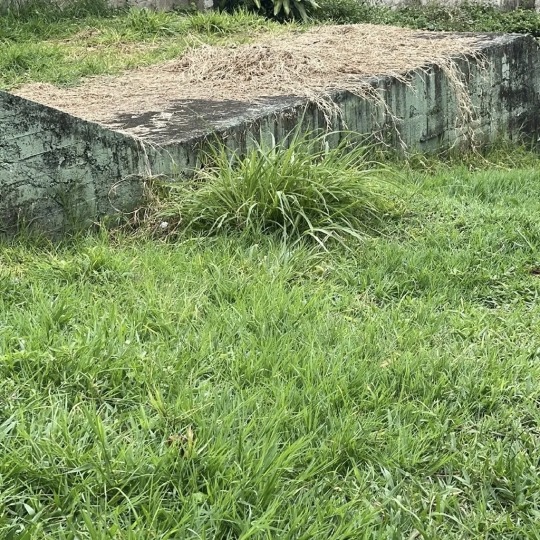
English:
Plant Name: Buffalo Grass
Scientific Name: Buchloe dactyloides
Origin: Native to the Great Plains of North America.
Description:
Buffalo grass is a warm-season perennial grass that typically grows 6 to 12 inches tall. It has a fine texture and forms dense, sod-like mats. The grass is characterized by its blue-green color and is drought-tolerant, making it well-suited for arid and semi-arid regions. It produces small flower spikes that are not very showy and goes dormant and turns brown in cooler months, but it greens up quickly in spring. Buffalo grass is often used in lawns, parks, and sports fields, as well as for erosion control and sustainable landscaping.
Care:
• Light: Prefers full sun and well-drained soil.
• Water: Drought-tolerant; requires minimal irrigation once established.
• Temperature: Thrives in warm temperatures and is tolerant of heat and drought.
• Soil: Adapts well to a variety of soil types, including sandy and clay soils.
• Fertilizer: Generally low nutrient requirements; apply a light fertilizer if necessary in the growing season.
• Mowing: Mow infrequently; maintaining a height of 2 to 4 inches helps promote healthy growth.
Uses:
Buffalo grass is commonly used for lawns, golf courses, and sports fields in areas where water conservation is essential. It is also used for erosion control on hillsides and disturbed areas. Its low maintenance requirements and drought resistance make it a popular choice for sustainable landscaping and xeriscaping.
Español:
Nombre de la Planta: Hierba Búfalo
Nombre Científico: Buchloe dactyloides
Origen: Originaria de las Grandes Llanuras de América del Norte.
Descripción:
La hierba búfalo es una gramínea perenne de temporada cálida que generalmente crece entre 15 y 30 centímetros de altura. Tiene una textura fina y forma esteras densas y similares a un césped. La hierba se caracteriza por su color verde azulado y es tolerante a la sequía, lo que la hace adecuada para regiones áridas y semiáridas. Produce pequeñas espigas florales que no son muy llamativas y se vuelve inactiva y marrón en los meses más frescos, pero se pone verde rápidamente en primavera. La hierba búfalo se utiliza a menudo en céspedes, parques y campos deportivos, así como para el control de la erosión y el paisajismo sostenible.
Cuidados:
• Luz: Prefiere pleno sol y suelos bien drenados.
• Riego: Tolerante a la sequía; requiere un riego mínimo una vez establecido.
• Temperatura: Prosperan en temperaturas cálidas y son tolerantes al calor y la sequía.
• Suelo: Se adapta bien a una variedad de tipos de suelo, incluidos suelos arenosos y arcillosos.
• Fertilización: Requiere generalmente pocos nutrientes; se puede aplicar un fertilizante ligero si es necesario en la temporada de crecimiento.
• Corte: Se corta con poca frecuencia; mantener una altura de 5 a 10 centímetros ayuda a promover un crecimiento saludable.
Usos:
La hierba búfalo se utiliza comúnmente para céspedes, campos de golf y campos deportivos en áreas donde la conservación del agua es esencial. También se utiliza para el control de la erosión en laderas y áreas perturbadas. Sus bajos requerimientos de mantenimiento y resistencia a la sequía la convierten en una opción popular para el paisajismo sostenible y la xeriscapic.
0 notes
Text
ok ok experimenting with the idea of succession-blooming native plant "lawn". i fully expect to have to look for or even select for traffic tolerance. cant have it all, yk? anyway. plants i'm considering so far:
Claytonia virginica
Viola species (i think there are about 12 to pick from local, could go wild and plant em all in their respective microclimates)
Carex pensylvanica, appalachica, eburnea, and probably like 30 other sedges
Podophyllum peltatum !!!!!
Fragaria virginiana
Geranium maculatum
Chrysogonum virginiatum
Arctostaphylos uva-ursi
Mitchella repens
Erythronium americanum 😍
Bouteloua dactyloides and gracilis and i have to read up on the local grasses
Diervilla lonicera omg i DID forget abt her for a sec how could i
Eragrostis spectabilis
Ruellia humilis
Schizachyrium scoparium ofc
Thalictrum spp,
Sisyrinchium angustifolium
Parthenocissus quinquefolia
0 notes
Text
Embracing the Beauty of Texas Native Turf Seeds
In the vast expanse of the Lone Star State, where the sun beats down and the soil tells tales of resilience, there lies a hidden gem in landscaping: Texas native turf seeds. These seeds hold the essence of the land, embodying the rugged beauty and tenacity of Texas itself. From the sprawling plains to the rugged hills, native turf seeds offer a sustainable and visually stunning solution for landscaping projects across the state.
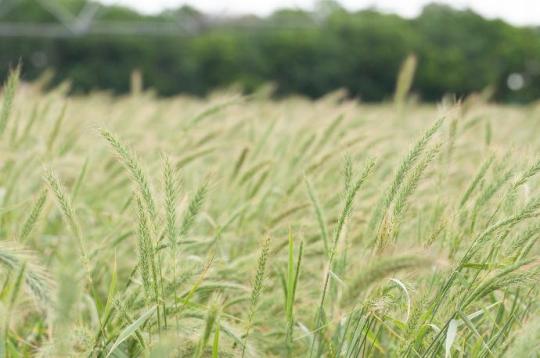
Exploring Texas Native Turf Seeds: Texas native turf seeds encompass a variety of grass species uniquely adapted to the state's diverse climates and soils. Among the most popular are buffalo grass, blue grama, and Texas grama. These grasses have evolved over millennia to withstand the harsh conditions of Texas, making them exceptionally well-suited for residential, commercial, and public landscaping projects.
Buffalo Grass: With its low-maintenance requirements and drought tolerance, buffalo grass (Buchloe dactyloides) reigns supreme as a top choice for Texas lawns. This warm-season perennial grass thrives in full sun and well-drained soils, making it ideal for the hot and dry conditions common throughout much of the state. Its fine texture and attractive green hue create a lush carpet-like appearance that enhances any landscape while requiring minimal water and fertilizer inputs.
Blue Grama: Blue grama (Bouteloua gracilis) is another native grass species that has earned its place in Texas landscapes. This warm-season grass is known for its distinctive blue-green foliage and delicate seed heads, which sway gracefully in the breeze. Blue grama is exceptionally drought-tolerant and adapts well to a wide range of soil types, making it a versatile choice for both residential and commercial landscaping projects. Its low-maintenance nature and resilience to Texas' challenging climate make it a favorite among homeowners and landscapers alike.
Texas Grama: As its name suggests, Texas grama (Bouteloua rigidiseta) is indigenous to the Lone Star State, thriving in its arid landscapes and sun-drenched plains. This warm-season grass forms dense tufts of fine-textured foliage, providing excellent ground cover and erosion control in both residential and commercial settings. Texas grama is prized for its ability to withstand prolonged periods of drought and its resilience to heat and humidity, making it an ideal choice for sustainable landscaping projects throughout Texas.
Benefits of Texas Native Turf Seeds: The use of Texas native turf seeds offers a multitude of benefits for both the environment and property owners:
Water Efficiency: Native turf grasses are naturally adapted to Texas' climate, requiring less water than traditional non-native species. By using native turf seeds, property owners can significantly reduce their water consumption and contribute to water conservation efforts.
Low Maintenance: Texas native turf grasses are well-suited to the state's climate and soil conditions, requiring minimal maintenance once established. With proper care, native turf lawns remain lush and green year-round, reducing the need for mowing, fertilization, and pesticide applications.
Wildlife Habitat: Native turf grasses provide essential habitat and food sources for Texas wildlife, including birds, butterflies, and pollinators. By incorporating native turf seeds into landscaping projects, property owners can support local ecosystems and promote biodiversity in their communities.
Resilience: Texas native turf grasses are naturally resilient to the challenges posed by the state's climate, including drought, heat, and fluctuating temperatures. By choosing native species, property owners can enjoy beautiful and sustainable landscapes that thrive despite environmental pressures.
In the dynamic tapestry of Texas landscapes, native turf seeds stand as a testament to the resilience and beauty of the Lone Star State. From the sprawling plains to the rugged hills, these grasses offer a sustainable and visually stunning solution for landscaping projects across Texas. By embracing the beauty of Texas native turf seeds, property owners can create landscapes that not only enhance the aesthetic appeal of their surroundings but also contribute to the conservation of Texas' natural resources for generations to come.
For more info:-
texas native turf seeds
DKseeds
0 notes
Text
Interactions with fungi vary among Tripsacum dactyloides genotypes from across a precipitation gradient
http://dlvr.it/SzWjLy
0 notes
Text
A good start in any North American garden is good ole clover, Trifolium repens grows low and Trifolium prstense gets about 3 ft tall at max height. Yarrow (Achillea millefolium) near the top of the embankment, where it's a little drier - get medicinal quality seeds or wildflower seeds, those horticultural yellow yarrows don't reseed themselves as well and aren't as medicinal/we don't know if or how their biochemistry differs from wild Achillea.
Lady fern (Aetherium felix-femina.... is it just me or does that mean "ethereal she-cat"?? Anyway...) and Dryopteris species are awesome for the lower, swampier parts of the embankment, depending om how much moisture there is. They usually like really wet feet, maybe with some seasonal standing water. Looks like Woodsia is a good fern for slightly drier spots, Osmunda osn't a plant I'm familiar with but looking at a plant list it seems to fit the bill as far as ferns go.
If you wanted some native grasses to beat out the competition, elymus hystix, trypsicum dactyloides, danthonia compressa are some options. For wetter spots, Carex is a great option. Plantagenaea and pensylvanica are some species but I'm sure there are more- its almost the season for Carex seeds and it's so much fun to collect! Not sure if it would be less fun if there were alligators in the water, though.
In wet spots, any milkweed is awesome!!! Yay milkweed. Asclepias incarnata is a native species.
Arisaema triphyllum is also a good choice lf wildflower. I would love to see more Passiflora incarnata and Turnera diffusa and Centella asiatica around because im a hippie. Herbs for the people man.
Strictly medicinal seeds has some awesome seeds if you want, but as for the more common species you can probably find them in bulk, especially the clover. Dont be afraid to collect dandelion seeds to spread around either, every naturalized plant is a space taken that an invasive plant cant occupy.
Heres the source i used for this:
Hope this helped! Im posting this without editing it so wish me luck. Let me know if you want me to look around in this old north carolina flora book i have from like the 20s to see what carex species or whatever else was growing there :)
I have a botany/gardening/landscaping puzzle I'd like help with
The setting: A broad grassy embankment, approximately 50ft (15.2m) wide and 8ft (2.5m) high, with clay soil and an incline of about 50°.
The question: What non-invasive, preferrably North Carolina native, plant could replace the grass of the slope? It must be low-growing, so as not to block pedestrians or line-of-sight on the road.
I did a bunch of research a while back, and while creeping blueberry (Vaccinium crassifolium) seemed like a good choice, I could not track down any for sale. In like, three years.
Any leads or suggestions? I refuse to plant invasives like ivy or periwinkle. Tagging @headspace-hotel but open to anyone.
27 notes
·
View notes
Text
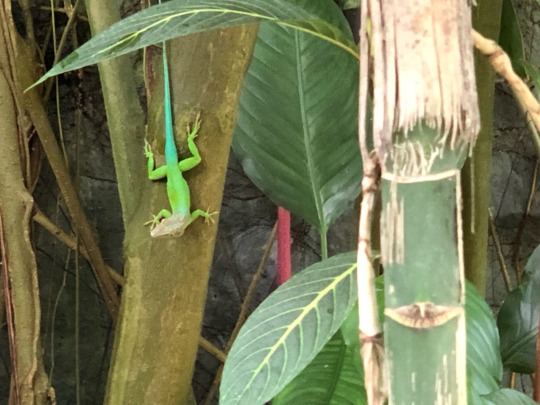
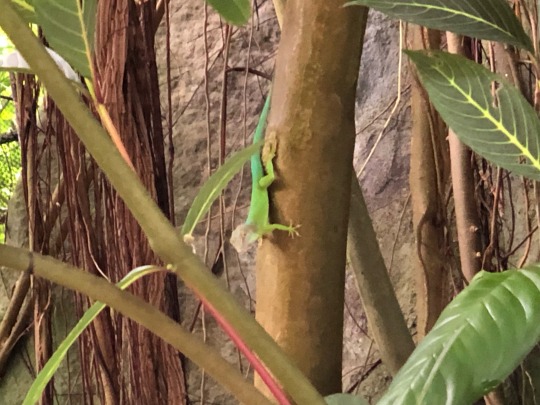
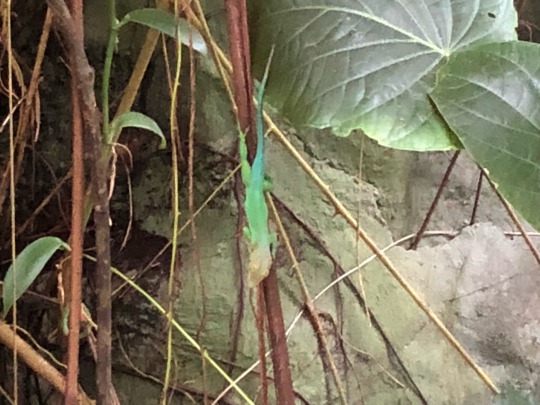
A little green anole!
1 note
·
View note
Text
Word of the Day 27/04/2012 - dactyloid
dactyloid a. - like a finger.
"Ah, Lotty! Would you dactyloid? Yes, I know it's the wrong usage, but it's terribly funny, don't you think."
1 note
·
View note
Text
dactyloid
dactyloid a. like a finger
“Ah, Lotty! Would you dactyloid? Yes, I know it’s the wrong usage, but it’s terribly funny, don’t you think.”
0 notes
Text
Sustainable Greenery Embracing Eco-Friendly Grass for a Greener Tomorrow
In a world where environmental consciousness is paramount, every aspect of our lives is being reevaluated for its ecological impact. Landscaping, too, is undergoing a transformation towards sustainability. One notable stride in this direction is the adoption of eco-friendly grass, a green alternative that not only enhances the beauty of outdoor spaces but also contributes to a healthier planet.
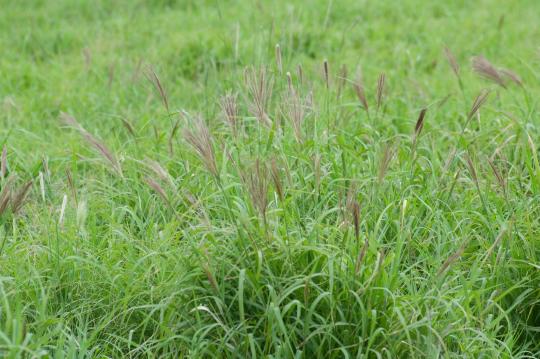
The Need for Eco-Friendly Grass:
Traditional grass varieties often require excessive water, fertilizers, and pesticides to maintain their lush appearance, putting a strain on water resources and contributing to soil and water pollution. Eco-friendly grass, on the other hand, is cultivated with an emphasis on environmental sustainability. These grasses are specifically chosen for their ability to thrive with minimal resources, making them an ideal choice for eco-conscious landscaping.
Benefits of Eco-Friendly Grass:
Water Conservation: Eco-friendly grass varieties are typically drought-resistant and require significantly less water than their conventional counterparts. This not only helps in water conservation but also reduces the environmental impact associated with excessive water usage.
Low Maintenance: One of the key advantages of eco-friendly grass is its low maintenance requirements. These grass varieties are often hardy and can withstand various weather conditions without the need for constant attention, reducing the need for harmful chemical inputs.
Chemical-Free Landscaping: Traditional lawns often rely on chemical fertilizers and pesticides to maintain their appearance. Eco-friendly grass, however, thrives without the need for such chemicals, contributing to a healthier and more natural outdoor environment.
Carbon Sequestration: Certain eco-friendly grasses have the ability to sequester carbon from the atmosphere, playing a role in mitigating the impacts of climate change. This makes them a valuable asset in the fight against global warming.
Biodiversity Enhancement: Some varieties of eco-friendly grasses are known for their ability to support local biodiversity. By creating a more natural and sustainable landscape, these grasses provide habitats for insects, birds, and other wildlife, contributing to a healthier ecosystem.
Popular Eco-Friendly Grass Varieties:
Buffalograss (Bouteloua dactyloides): Native to North America, Buffalograss is known for its low water requirements and excellent drought tolerance. It forms a dense, green carpet that is not only visually appealing but also environmentally friendly.
Fine Fescue (Festuca spp.): Fine Fescue is a cool-season grass that includes several species known for their adaptability and low maintenance. These grasses thrive in a variety of conditions and are often used for their shade tolerance.
Zoysia Grass (Zoysia spp.): Zoysia Grass is a warm-season grass that is highly drought-resistant and can thrive in various soil types. It is known for its dense growth, making it an excellent choice for lawns with high foot traffic.
Embracing eco-friendly grass is a significant step towards creating sustainable and environmentally responsible landscapes. As individuals and communities increasingly recognize the importance of conservation, the adoption of these grass varieties becomes a powerful tool in the broader effort to build a greener and healthier planet. By choosing eco-friendly grass for our lawns and outdoor spaces, we not only enhance the beauty of our surroundings but also contribute to a more sustainable and harmonious relationship with nature.
For more info:-
seeds for food plots
0 notes
Text
Lush Landscapes Exploring the Beauty of Texas Native Turf Seed
In the vast and diverse landscape of Texas, where the weather can range from scorching summers to mild winters, finding the right turf for your lawn can be a challenge. However, the solution may lie in the indigenous grasses that have evolved over centuries to thrive in the Lone Star State's unique climate and soil conditions. Texas native turf seed is gaining popularity for its resilience, water efficiency, and ability to create lush, sustainable landscapes.
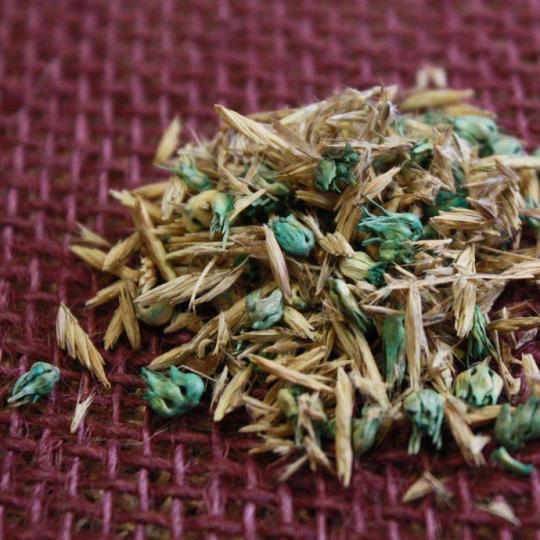
The Rich Diversity of Texas Native Turf:
One of the key advantages of using native turf seed is the rich diversity of grass species adapted to Texas' various regions. Native grasses like Buffalo grass (Buchloe dactyloides), Bermuda grass (Cynodon dactylon), and Zoysia grass (Zoysia spp.) have evolved to withstand the state's heat, droughts, and occasional cold spells. These grasses are well-suited for different climate zones within Texas, ensuring homeowners can find a variety that suits their specific needs.
Water Efficiency and Drought Tolerance:
Texas is no stranger to water scarcity, and maintaining a lush lawn can be a challenge. Native turf seed, however, offers a solution by requiring less water than traditional non-native grasses. Many Texas native grasses have developed deep root systems, allowing them to access water from lower soil levels, making them more drought-tolerant. This not only conserves water but also contributes to the overall sustainability of landscaping practices in the region.
Adaptability to Texas Soil:
The diverse soil types across Texas, from sandy soils in the west to clayey soils in the east, make it crucial to choose a turf seed that can adapt to these conditions. Texas native grasses have evolved to thrive in different soil types, making them well-suited for the state's varied landscapes. This adaptability not only enhances the grass's overall health but also reduces the need for excessive soil amendments and fertilizers.
Low Maintenance Requirements:
For homeowners looking to reduce the time and effort spent on lawn maintenance, Texas native turf seed is an excellent choice. Native grasses are often more resistant to pests and diseases, reducing the need for chemical interventions. Additionally, their natural adaptation to Texas weather conditions means they require less supplemental care, such as irrigation and fertilization, making them a low-maintenance and cost-effective landscaping option.
Wildlife Habitat and Ecological Benefits:
Beyond the aesthetic appeal of a green lawn, Texas native turf seed contributes to the creation of natural habitats for local wildlife. Native grasses provide food and shelter for various species, including birds, insects, and small mammals. By choosing native turf, homeowners can play a role in preserving the ecological balance of their local environment and supporting biodiversity.
Texas native turf seed offers a sustainable and environmentally friendly solution for homeowners looking to create beautiful, resilient lawns in the Lone Star State. From water efficiency and drought tolerance to adaptability to diverse soil types, native grasses provide a host of benefits. By choosing native turf, homeowners not only enhance the visual appeal of their landscapes but also contribute to the conservation of Texas' natural resources and ecosystems. Embracing the beauty of Texas native turf seed is a step toward creating landscapes that are not only lush and vibrant but also sustainable for future generations.
For more info :-
seeds for food plots
dk seeds
0 notes